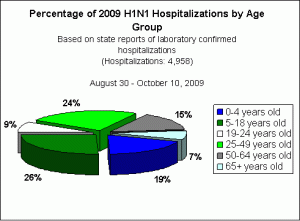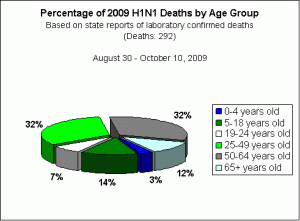
H1N1 has been termed a “disease of the young” but all the reasons for this are not clear. In the 30 October issue of Science, researchers from the National Institute of Allergies and Infectious Diseases of the National Institute of Health suggest an answer may be found through closer examination of antigenic drift.
Antigenic drift is the means by which viruses evade infection-fighting antibodies through mutation, specifically by changing the shape of their major surface proteins, which are a form of antigens, or antibody generators. Antigenic drift can lead to a loss of immunity and is the reason flu vaccines are updated annually.
Influenza type A viruses are divided into types based on differences in two viral surface proteins hemagglutinin (H) and neuraminidase (N). There are 16 known H subtypes and nine known N subtypes. Hence, the nomenclature “H1N1” for the swine flu currently in circulation.
Using a strain of flu strain from 1934, NIAID scientitsts sequenced the gene from the influenza virus protein, hemagglutinin (H), after it mutated from nine successive rounds of exposure to unvaccinated and vaccinated mice, which developed antibodies to the strains.
Over time, the evolved virus became more “sticky” or tightly bound to infected cells it used enter the blood, lungs, nose or throat of a new host. When the mutated virus was introduced into unvaccinated, “immunologically naive” mice it reverted into a less-sticky form, a critical stage in enabling infection to spread to other cells.
The findings underscore the importance of vaccines, especially for young persons, who have been less exposed to multiple virus strains. Vaccination is also key to slowing the rate of antigenic drift in influenza viruses.
MedicineNet: Flu, Influenza, H1N1
NIH: NIAID Scientists Propose New Explanation for Flu Virus Antigenic Drift
Science Magazine: Hemagglutinin Receptor Binding Avidity Drives Influenza A Virus Antigenic Drift, 30 October 2009, Vol 326, no 5953









